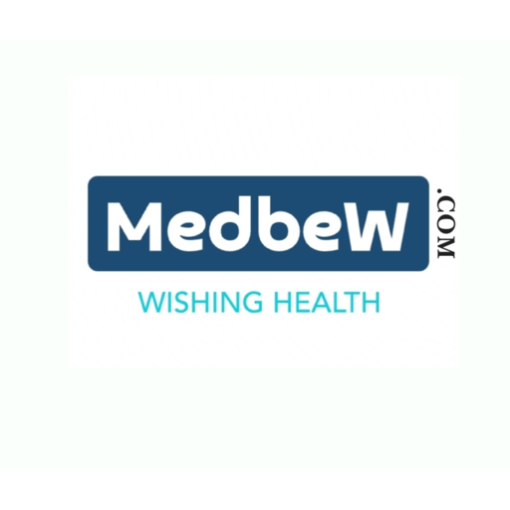Understanding Cholesterol: Good vs. Bad
Cholesterol is a vital substance in our bodies, playing a crucial role in the production of hormones, vitamin D, and digestive fluids. However, an imbalance in cholesterol levels can pose significant health risks, particularly concerning heart disease. Understanding the difference between “good” and “bad” cholesterol is key to maintaining heart health and overall well-being.
This article will delve into what cholesterol is, the difference between good (HDL) and bad (LDL) cholesterol, how cholesterol affects health, and practical ways to manage cholesterol levels.
1. What is Cholesterol?
Cholesterol is a waxy, fat-like substance found in every cell of the body. It’s produced by the liver but also comes from certain foods. The body uses cholesterol for several important functions, including:
- Hormone production: Cholesterol is essential for making sex hormones like estrogen, progesterone, and testosterone.
- Cell structure: It helps in building and maintaining cell membranes.
- Digestive fluids: Cholesterol is used to produce bile acids that help digest fat.
While cholesterol is necessary for these bodily functions, too much cholesterol, particularly the wrong type, can lead to serious health issues.
2. Good Cholesterol vs. Bad Cholesterol
A. High-Density Lipoprotein (HDL) – The Good Cholesterol
High-density lipoprotein (HDL) is often referred to as “good” cholesterol because it helps remove cholesterol from the bloodstream, transporting it to the liver where it can be processed and eliminated. High levels of HDL cholesterol are associated with a lower risk of heart disease. HDL works by:
- Carrying cholesterol away from the arteries: HDL transports excess cholesterol from the arteries to the liver, preventing buildup in the blood vessels.
- Reducing inflammation: HDL has anti-inflammatory properties that help protect against damage to the blood vessels.
Healthy levels of HDL:
- For men: At least 40 mg/dL
- For women: At least 50 mg/dL
B. Low-Density Lipoprotein (LDL) – The Bad Cholesterol
Low-density lipoprotein (LDL) is known as “bad” cholesterol because it carries cholesterol to the arteries, where it can accumulate and form plaque. This plaque buildup can narrow or block the arteries, leading to conditions like atherosclerosis (hardening of the arteries), which increases the risk of heart attacks, strokes, and peripheral artery disease.
How LDL contributes to health risks:
- Artery blockage: Over time, the buildup of LDL cholesterol can restrict blood flow to the heart and brain, causing significant cardiovascular events.
- Formation of blood clots: When plaque in the arteries ruptures, it can lead to the formation of blood clots that can block blood flow entirely, resulting in heart attacks or strokes.
Healthy levels of LDL:
- Ideally, below 100 mg/dL. Higher levels above 160 mg/dL are considered high and can be dangerous.
3. The Impact of Cholesterol on Heart Health
The balance between HDL and LDL cholesterol is crucial for maintaining cardiovascular health. High levels of LDL cholesterol combined with low levels of HDL cholesterol increase the risk of plaque formation in the arteries, which can lead to:
- Coronary artery disease (CAD): The most common type of heart disease, CAD occurs when the coronary arteries, which supply blood to the heart, become narrowed or blocked.
- Heart attacks and strokes: Plaque buildup can rupture, causing blood clots that block blood flow to the heart or brain, leading to heart attacks or strokes.
- Peripheral artery disease (PAD): LDL cholesterol can also affect the arteries in the legs, arms, and other parts of the body, causing pain, numbness, or even the need for amputation in severe cases.
4. Factors that Influence Cholesterol Levels
Several factors contribute to high or unhealthy cholesterol levels, including:
- Diet: Foods high in saturated fats, trans fats, and cholesterol can increase LDL levels. Examples include red meat, full-fat dairy products, fried foods, and processed snacks.
- Lack of physical activity: A sedentary lifestyle can lead to weight gain, increased LDL levels, and lower HDL levels.
- Smoking: Smoking damages the walls of blood vessels, making it easier for plaque to build up. It also lowers HDL levels.
- Genetics: Some people have a genetic predisposition to high cholesterol levels, which may require medical intervention.
5. How to Manage Cholesterol Levels
A. Healthy Diet
- Increase intake of healthy fats: Opt for unsaturated fats found in olive oil, avocados, nuts, and fatty fish (like salmon, mackerel, and sardines). These fats can help lower LDL and raise HDL levels.
- Eat more fiber: Foods high in soluble fiber, such as oats, fruits, vegetables, and legumes, can help reduce LDL cholesterol.
- Limit saturated and trans fats: Reduce your intake of red meat, full-fat dairy products, fried foods, and processed snacks. Replace them with healthier options like lean proteins, whole grains, and plant-based oils.
B. Exercise Regularly
Physical activity is one of the most effective ways to raise HDL cholesterol and lower LDL cholesterol. Aim for at least 150 minutes of moderate-intensity exercise per week, such as brisk walking, cycling, or swimming. Strength training and aerobic exercises are both beneficial for improving cholesterol levels.
C. Quit Smoking
Smoking lowers HDL cholesterol and increases the risk of heart disease. Quitting smoking can improve cholesterol levels and reverse some of the damage done to the heart and blood vessels.
D. Maintain a Healthy Weight
Losing weight, if overweight, can help lower LDL cholesterol and increase HDL cholesterol. Even small reductions in body weight can have a positive impact on cholesterol levels and overall cardiovascular health.
E. Medication
In some cases, lifestyle changes alone may not be enough to manage cholesterol levels, particularly if genetics play a role. Doctors may prescribe medications like statins, which help lower LDL cholesterol and reduce the risk of heart disease.
Conclusion
Understanding the difference between good (HDL) and bad (LDL) cholesterol is essential for maintaining heart health. By adopting healthy lifestyle changes, such as a balanced diet, regular exercise, quitting smoking, and maintaining a healthy weight, you can keep cholesterol levels in check and reduce the risk of heart disease and other complications. If needed, medication can also be an important tool in managing cholesterol levels.
Here are the references for the article Understanding Cholesterol: Good vs. Bad:
- American Heart Association. (2021). Cholesterol: Good vs. Bad. Retrieved from heart.org
- Centers for Disease Control and Prevention (CDC). (2022). Cholesterol. Retrieved from cdc.gov
- Mayo Clinic. (2022). Cholesterol Levels: What Numbers Should You Aim For?. Retrieved from mayoclinic.org
- Harvard Medical School. (2021). Understanding Cholesterol Levels. Retrieved from health.harvard.edu
- World Health Organization (WHO). (2020). Cardiovascular Diseases (CVDs). Retrieved from who.int
- National Institutes of Health (NIH). (2022). High Cholesterol and Heart Disease. Retrieved from nih.gov
- These sources provide reliable information on cholesterol management and health impacts.






